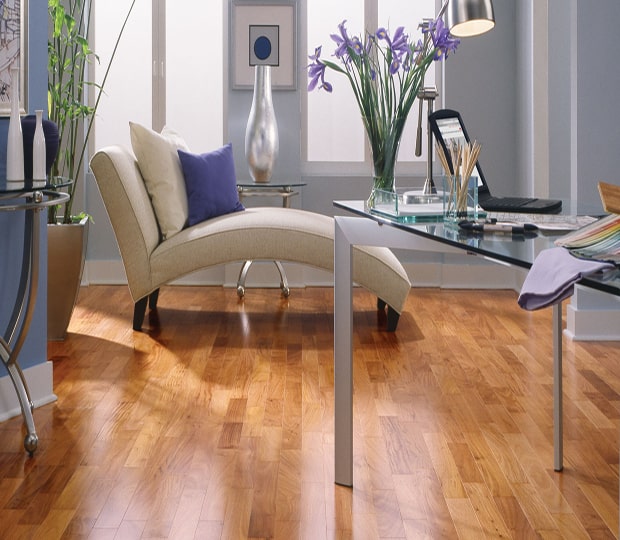Engineered flooring construction has several benefits over solid hardwood. The most important one is how the material reacts to temperature and humidity. With solid hardwood flooring, any changes in either temperature or relative humidity can cause the boards to warp, cup, gap, or buckle. Engineered wood flooring is more dimensionally stable, due to the multi-layer construction.
Engineered wood floors also offer an advantage in the installation methods. Solid hardwood must usually be nailed down to a plywood subfloor. Engineered wood has the option of being either stapled or glued down over a wood or concrete subfloor. Some engineered wood products can also be installed using a “floating” system, where the planks are fastened to one another, and are simply “floated” over a padding or underlayment,
One of the main advantages of solid hardwood over engineered is it’s ability to be sanded and refinished. With solid hardwood, you can sand any number of times, until you reach the top of the tongue-and-groove (about 1/4″). Depending on the thickness of the engineered flooring wear layer, it may be able to be sanded, at most 1-2 times. Generally speaking, solid hardwood floors will tend to last longer than engineered with the same levels of care and maintenance. At the same time, engineered floors will react better to seasonal changes.
Typically engineered hardwood flooring will cost you less than solid hardwood flooring for the same look, because less of the “species” tree is used than with solid wood. Also, freight costs are lower because engineered flooring is lighter in weight and therefore less costly to transport. These factors also help make engineered flooring friendly to the environment.

